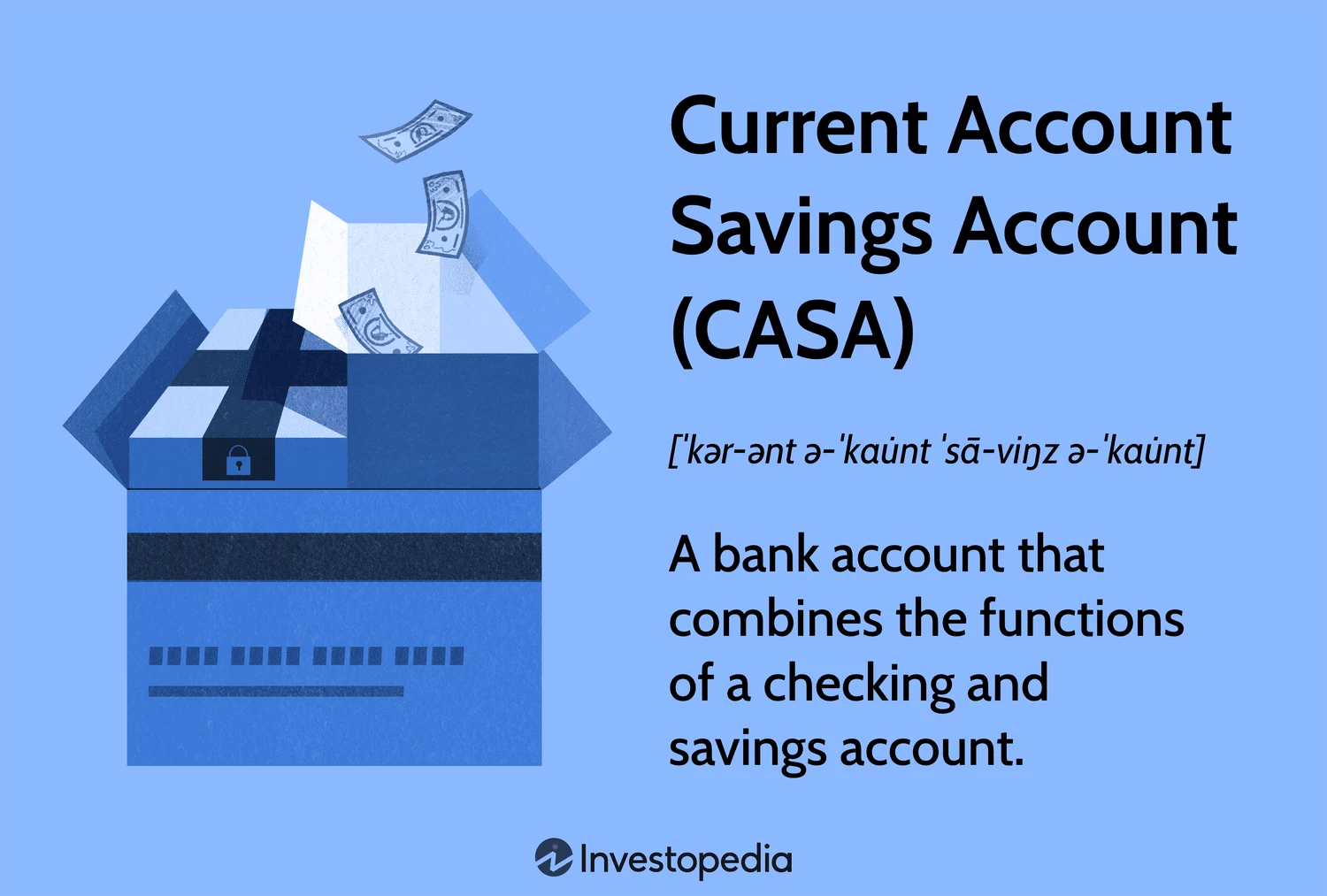Understanding Current Account Savings Accounts (CASA)
A Current Account Savings Account (CASA) is a unique banking product that merges the features of both a checking and savings account. It allows customers to earn interest on their savings while maintaining easy access to their funds for everyday expenses.
While CASA is utilized globally, it is predominantly popular in Western Asia and Southeast Asia regions.
**Key Insights on CASA**
- CASA serves as a non-term deposit account.
- It offers a lower interest rate compared to fixed-term deposits like certificates of deposit, making it a cost-effective funding source for financial institutions.
- For consumers, CASA provides a convenient way to accumulate savings gradually.
Operational Dynamics of Current Account Savings Accounts (CASAs)
CASA operates as a non-term deposit, offering flexible banking and saving options without any specific maturity date. Customers maintain control over the account’s continuity as long as desired.
Unlike term deposits such as certificates of deposit (CDs) that lock funds for a set period, CASA funds remain accessible at all times. Upon maturity, CD funds are repaid with the agreed interest.
Advantages of CASAs for Financial Institutions
As a form of checking account, CASA funds are liquid and can be withdrawn or used freely. The interest component on savings incentivizes customers to maintain deposits and contribute over time.
Banks typically offer CASA accounts either free of charge or for a minimal fee based on specific balance criteria.
CASA operates as a cost-effective funding avenue for banks compared to issuing high-interest term deposits like certificates of deposit. This disparity results in higher net interest income for banks.
However, the unpredictability inherent in on-demand deposits poses a challenge as banks face uncertainty in available lending funds.
Benefits of CASAs for Consumers
CASA ensures regular savings habits by offering a convenient and flexible saving mechanism.
While customers forgo higher interest rates, CASA’s liquidity allows easy access to funds without lengthy lock-in periods.
CASA fosters enduring relationships between consumers, small businesses, and banks over time.
Current Account vs. Savings Account
While current account funds in a CASA yield minimal to no interest and offer unlimited deposits and withdrawals, savings account funds come with withdrawal restrictions varying by bank.
Understanding CASA Ratio
The CASA ratio serves as a pivotal metric for determining a bank’s liquidity in areas where CASA dominance prevails. This metric indicates the proportion of total deposits held in current and savings accounts.
A higher CASA ratio signals better bank liquidity since it implies a larger share of stable deposits available for lending purposes.
The ratio is computed using the formula: CASA Ratio = CASA Deposits ÷ Total Deposits
**Understanding CASA vs. Savings Account**
A CASA integrates a savings account component where customers earn interest, typically at a slightly lower rate than a conventional savings account.
By consolidating checking and savings functionalities, CASA encourages consistent saving habits more effectively than standalone savings accounts.
The ease of accessing CASA savings makes it less stable for banks, influencing lower interest earnings.
**Comparing CASA Account to Checking Account**
A section of CASA resembles a regular checking account, facilitating cash withdrawals, check writing, and online transactional conveniences. This segment, however, does not accrue interest.
Competitive Interest Rates on CASA Accounts
Interest rates on CASA accounts typically remain lower than other bank offerings, reflecting the absence of time constraints.
CASA funds remain fully accessible, allowing customers to utilize their money at will.
To access higher interest rates, customers need to commit to specific timeframes for retaining funds in the bank.
The Bottom Line on CASA Accounts
CASA accounts cater to consumers and small businesses, offering a flexible saving option with some interest benefits.
Essentially a blend of checking and savings services, CASA nurtures consistent weekly savings habits while providing banks with a reliable capital stream for higher yield reinvestment.
